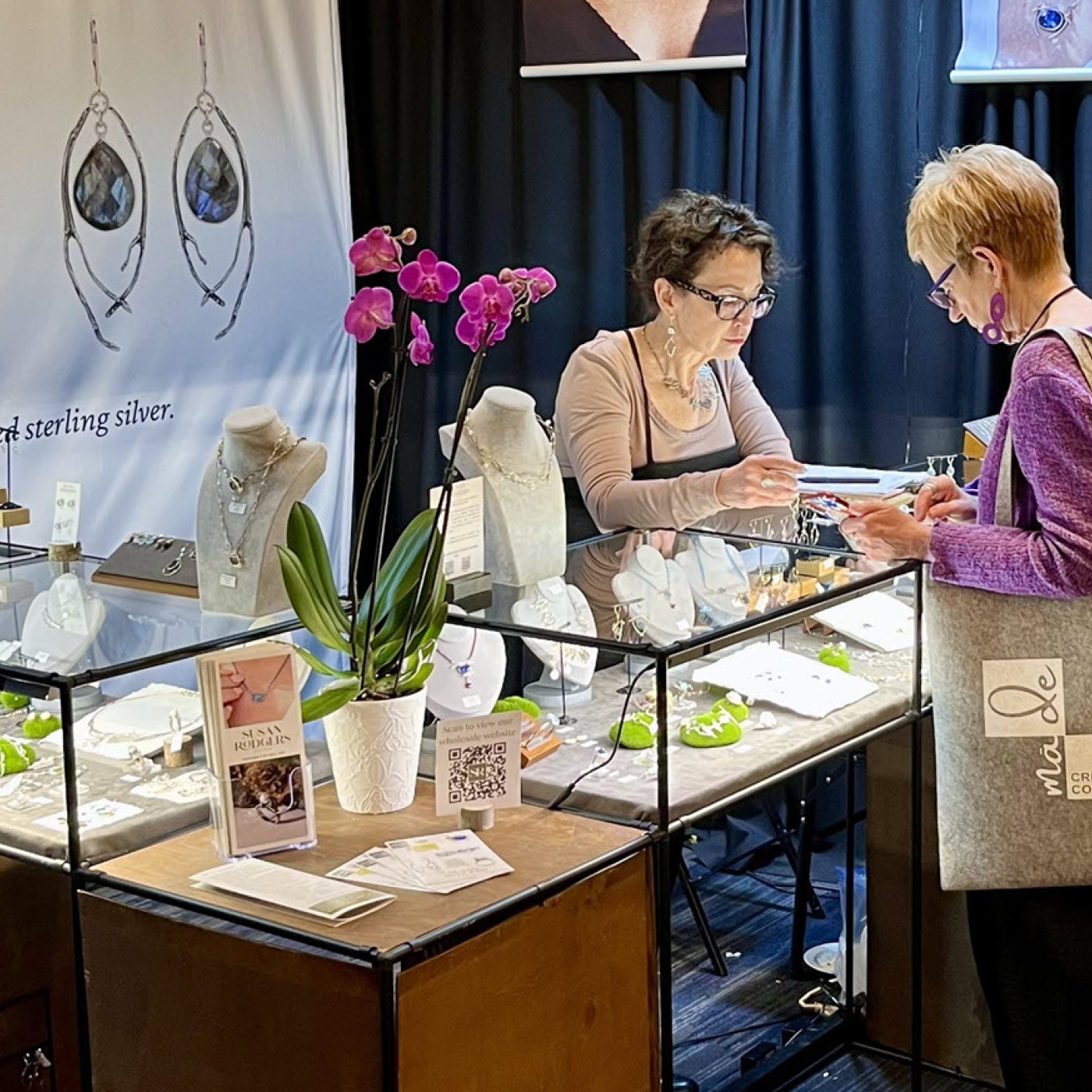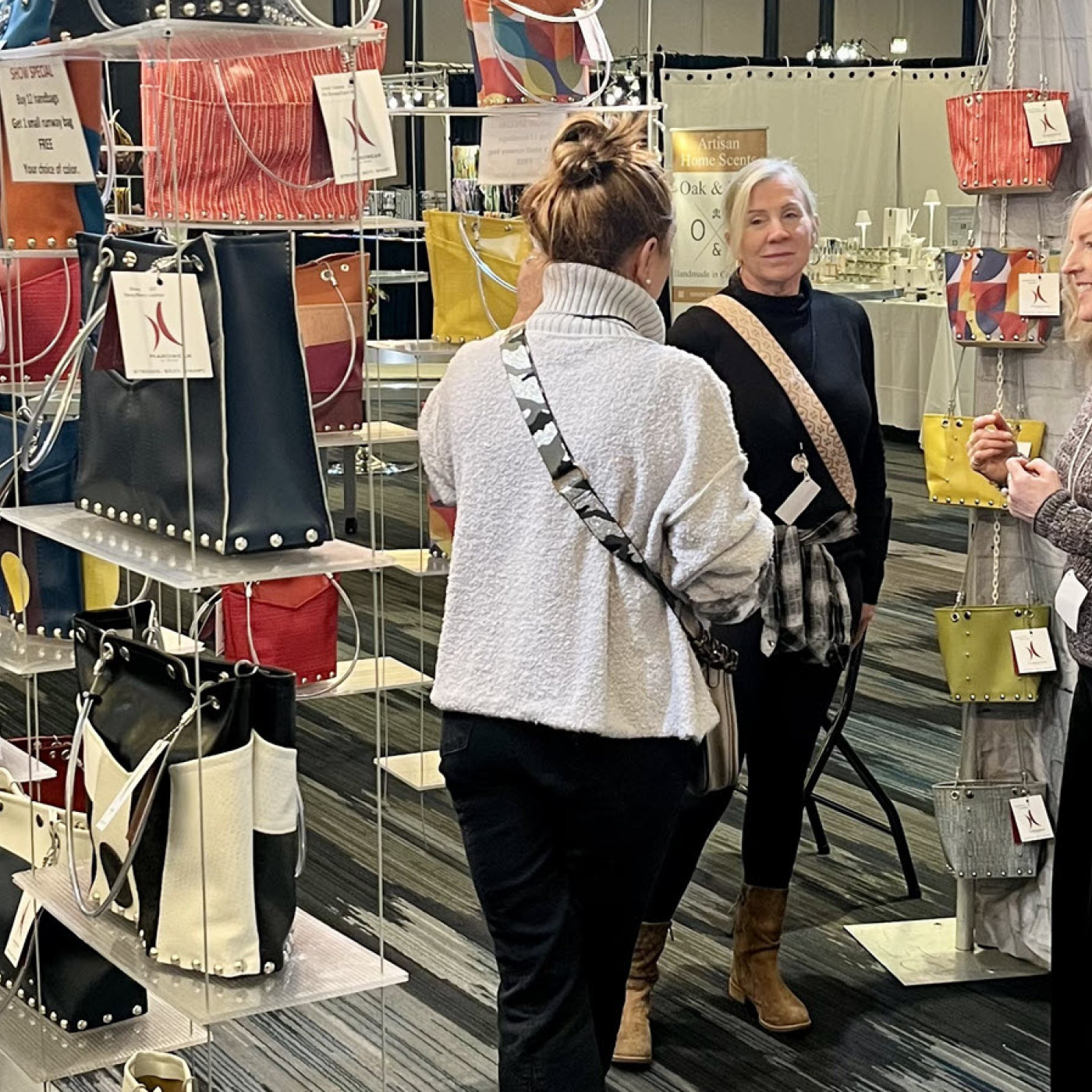A Trade Show for Makers Artist Shares Experience at New Wholesale Show

Summer is approaching, and most of us are getting ready for our standard bevy of shows. We are making sure the tent is in good repair, displays look decent, and — most importantly — that we have a supply of our bestselling handwork!
There is always more to say about getting ready for our traditional outdoor shows. But in this issue, I am writing about something a bit different.
Many of us who find the physical and time commitment demands of being on the road increasingly difficult eventually reach a crossroads (no pun). We love our art and what we do but just cannot keep up the pace anymore.
Does that mean we have to quit our profession? Or does it mean we need to find a new way of doing it?
A couple of years ago, I realized age was catching up with me and continuing a show schedule that required me to be on the road 30 weekends a year was no longer feasible. I started to explore and reshape my business to focus on selling wholesale work to stores around the country. My double-hernia surgery last year confirmed it was the right decision.
This article is for those considering a transition to selling their art to stores, with a focus on how to prepare for doing a wholesale trade show. Preparing to do a trade show has some similarities to our traditional shows but is a different creature in most respects.
Takin’ Care of Business
A trade show is a closed show. It is not open to the public, there are no direct sales, and the attendees are only registered buyers for stores and companies.
Some shows are regional, while others are national. Among the larger shows are Atlanta Market, NY NOW, and Shoppe Object. There are also specialized trade shows, and the best example I have found for our crowd is MADE – Our Show.
As a fellow maker, I encourage you to focus on a show like MADE. Not only are all the vendors artists and makers, but the buyers know this and understand our price point will be higher than traditional buy/sell vendors.
In fact, these buyers are specifically looking for sellers like us and want handmade items for their shops. Some of the larger shows may get more traffic, but most buyers do not understand the handmade (and Made in America) market and are unwilling to pay our prices.
Since only store buyers attend a trade show, the number of people is fewer than what we see at a traditional art show. However, remember that an art show customer buys a mug, while a trade show customer orders hundreds and often thousands of dollars’ worth of items at a time. The volume of your sales can be much higher even though the number of customers is far fewer.
Since you are selling directly to stores, you must alter your display and approach. You must appeal to people who are there not just because they love your work but because they think other people will love your work and be willing to buy it from them.
Since these shows tend to be in convention centers or pleasant hotels, the cost for a booth can be high, especially in comparison to a traditional art show. Do not panic — if you have a product that appeals to many, your sales can often be 10 to 20 times what you sell at an art show.
The price for the show assumes the buyers have been well curated and screened by the show’s organizers. This is of excellent value to you as an artist and businessperson.
These are serious buyers who are not there just for a fun day out. They have often traveled significant distances and incurred expenses to attend the show to stock their store for the coming season.
Also, the cost of displaying at a trade show considers you are not just making a one-time sale. If you work hard, provide good customer service, and have items that sell well for your customer, they will order from you again. The value of both the exposure and the connection can have long-term benefits for you and your business.


